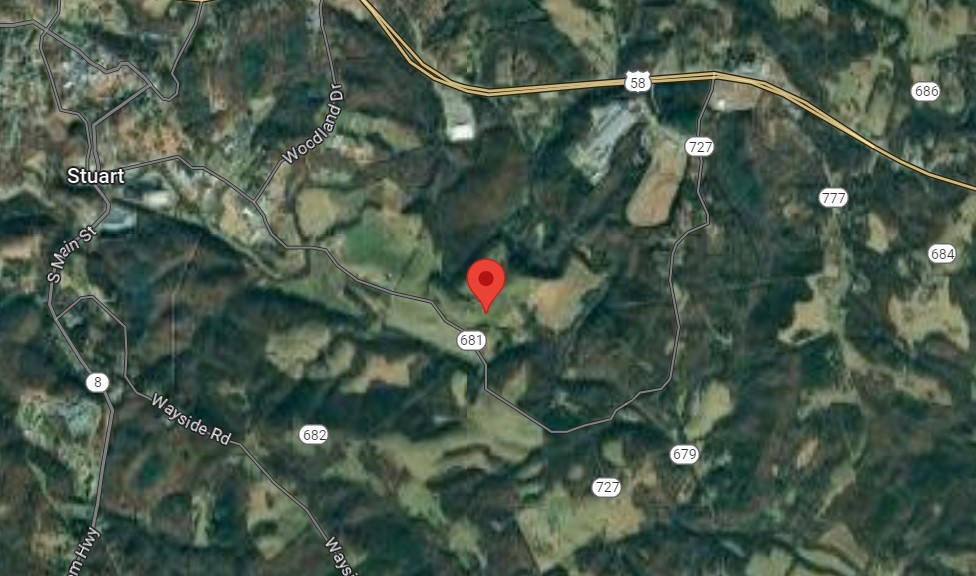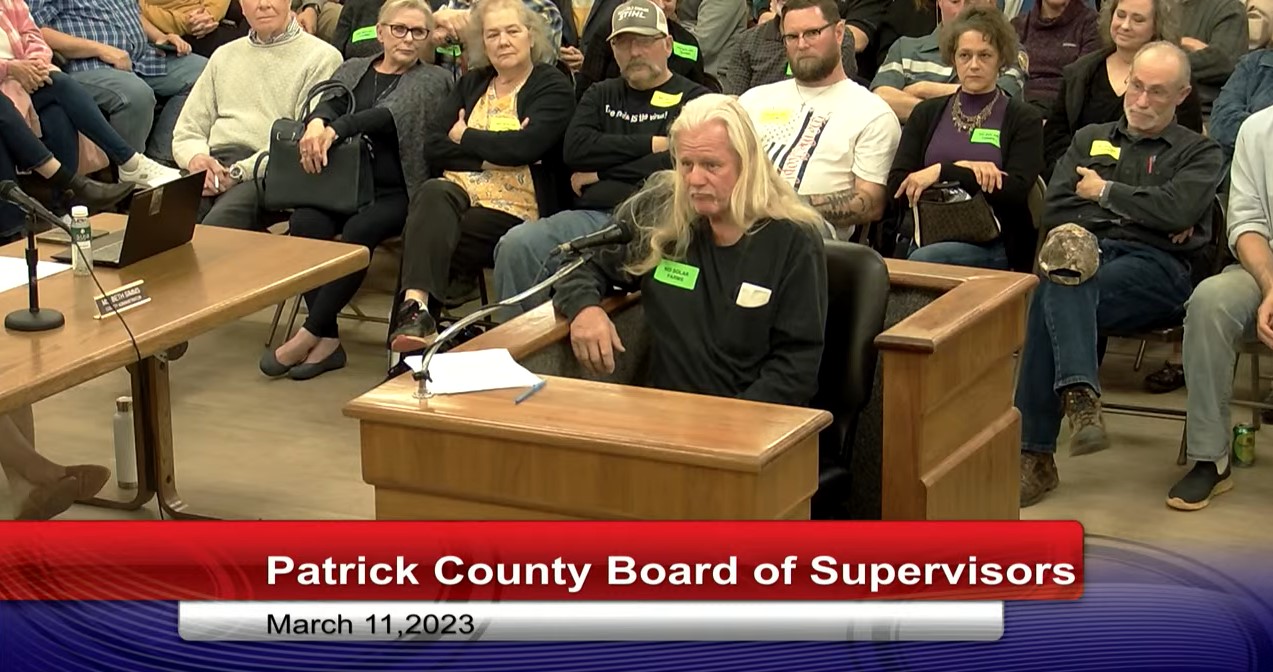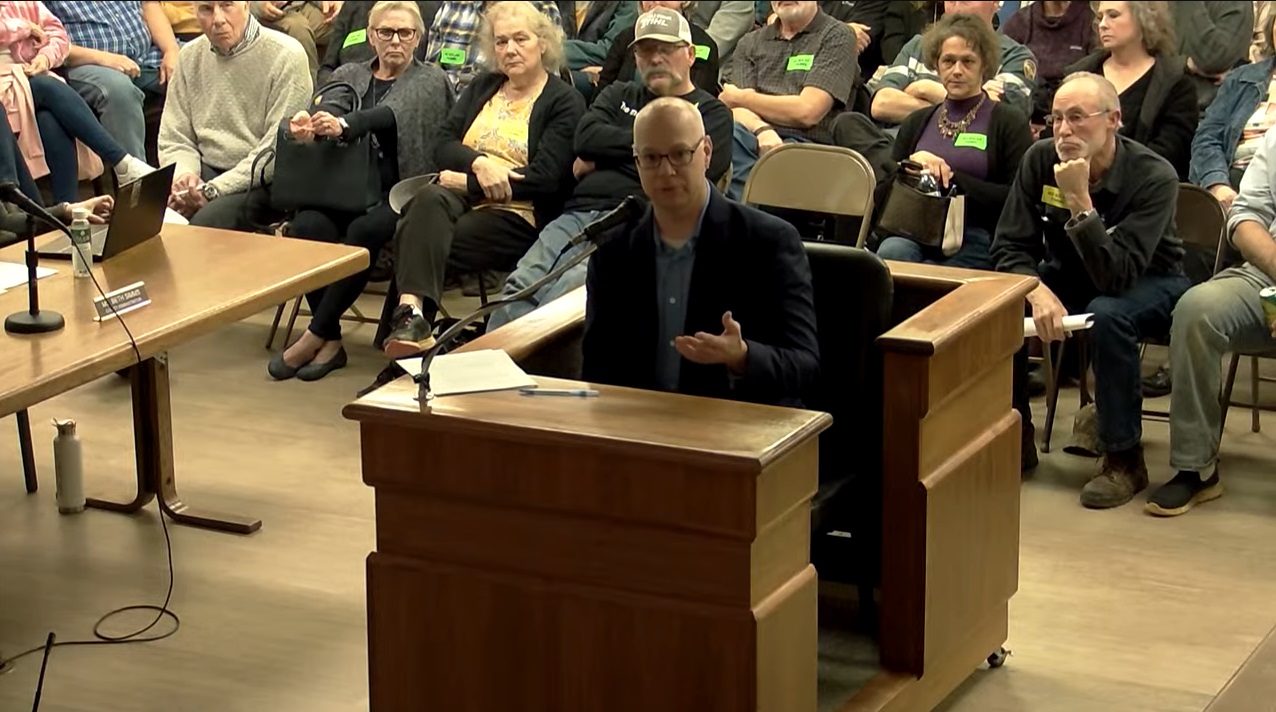Patrick County supervisors on Monday narrowly voted to approve the county’s first utility-scale solar farm after nearly two hours of discussion during a public hearing that drew two dozen speakers.
Fairy Stone Solar would be a 12-megawatt project — generating enough electricity to power just over 2,000 homes — on 211 acres southeast of the town of Stuart. A representative for the developer, Arlington-based Energix Renewables, said at the hearing that the project would deliver $2.48 million in tax revenue to the county over its 40-year lifespan plus an upfront $198,000 payment. 
The supervisors’ approval followed the county planning commission’s favorable recommendation in August. Last month, the planning commission recommended approval of another solar project, a 13.2-megawatt facility that Energix proposes for 120 acres just outside Woolwine; as with Fairy Stone, that project will need to go before the board of supervisors for consideration.
“Solar is here because we’ve got a problem with climate change,” said Steve Ferring, the lone county resident who spoke in favor of the project during the meeting’s public comment period. “I don’t like it, but it’s affecting the world now, and we have an obligation. We have an obligation to try and mitigate it. Solar is one option.”
Nearly two dozen other residents spoke against Fairy Stone, citing concerns that included its impact on scenic views and tourism, whether the panels would actually last as long as promised, and its potential harm to soil and water, with several speakers focusing on the fact that the panels, manufactured by Arizona-based First Solar, contain a chemical called cadmium telluride.

“We gain nothing by using solar panels with toxic chemicals in them,” said resident Malcolm Roach.
Cadmium telluride is found in a type of solar panel that uses very thin layers of semiconductor material, compared to the thicker crystalline silicon more commonly found in other panels. While cadmium telluride panels are the second most common photovoltaic technology in use, they represent only about 5% of the world market, according to the U.S. Department of Energy’s Office of Energy Efficiency and Renewable Energy.
Energix representative Shawn Hershberger said more than 250 million First Solar panels have been deployed worldwide, representing more than 60,000 megawatts of solar production, and there has been “not one example of contamination over 25 years.”
“There’s misinformation and fear-mongering, and then there’s reality,” Hershberger said.
County resident Noel Foster said solar projects are “notorious” for environmental violations during their construction.
“We need to preserve the natural beauty of our county and any endangered species in our waters,” Foster said.
Several speakers on Monday not only opposed the Fairy Stone project but expressed distrust of Energix itself and whether the company would remain in business through the project’s four-decade lifetime.

Speakers referenced when the Virginia Department of Environmental Quality in March 2023 proposed Energix pay a fine of nearly $99,000 for stormwater control violations at seven solar farms in the counties of Appomattox, Buckingham Henry, King William and Prince George and the town of Wytheville.
Hershberger said prior to those citations, Energix had voluntarily invited DEQ to tour all of its Virginia sites and said most of the problems identified were minor.
“Those issues have been resolved with DEQ and all of our sites are in compliance,” Hershberger said.
After about two hours of discussion, supervisors ultimately voted 3-2 to approve the project, with Steve Marshall, Doug Perry and board Chair Brandon Simmons in favor and supervisors Clayton Kendrick and Jonathan Wood opposed.
Addressing speakers’ concerns about large solar farms’ impact on scenic views, Simmons said that “if we’re saying that we can’t do it just because of the sight of it, then we might as well go ahead and say that we are headed for zoning.”
The county of about 17,600 people on the Virginia-North Carolina border is among a small group of Virginia counties that do not have zoning. In other localities, zoning ordinances generally divide land into districts and set rules governing how property can be used.
“You can ride through Patrick County in some ways and you can see a beautiful view the whole way,” Simmons said. “But until you get to that beautiful view, there’s very few roads you can ride on in Patrick County without seeing something that’s falling in, or something that has turned into a junkyard and things of that nature, or clear-cutting.”
Monday’s meeting turned tense at times, with residents speaking out from the audience — including one who called out “You sold us out” following the vote — and supervisors urging attendees to follow the rules of order.
The Fairy Stone project came before Patrick County supervisors as a state-versus-local dynamic continues to play out across Virginia regarding who should have authority to approve new solar projects.
Southside Virginia’s flat, relatively inexpensive land has attracted solar developers in recent years, but a number of localities have begun resisting new projects as residents express concern about such projects’ impacts on agricultural land availability, the environment, property values and scenery.
Patrick County’s neighbor, Henry County, has one solar project up and running and another dozen in some stage of planning or development. Of those, five have been approved to proceed with construction while a sixth is set to come before supervisors at an upcoming public hearing.
Last summer, Henry County supervisors adopted an ordinance limiting solar development to 1% of the county’s land mass, which still left more than 500 acres for more projects. Several other local governments have enacted similar land caps.
Earlier this month, supervisors in Halifax County went a step further by voting to halt any applications for new solar projects for the time being.
Nonetheless, the Virginia Clean Economy Act of 2020 mandates that the state’s two largest electric utilities, Dominion Energy and Appalachian Power, achieve carbon-free energy portfolios by 2045 and 2050, respectively, and it sets a target of 16,100 megawatts of solar or on-shore wind energy to help achieve that goal.
[Disclosure: Dominion is one of our donors, but donors have no say in news decisions; see our policy.]
State lawmakers this past General Assembly session tried to accelerate the adoption of new solar projects with proposals to give state regulators more authority to approve new projects and prevent localities from enacting blanket bans on new projects. Both efforts were carried over to next year’s session.
Correction: Shawn Hershberger was the Energix representative who spoke at the March 11 Patrick County Board of Supervisors meeting. His last name was incorrect in an earlier version of this story.



